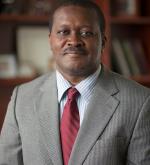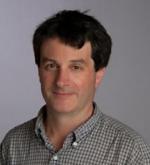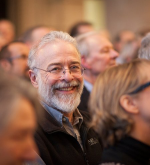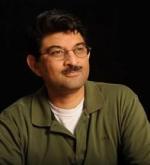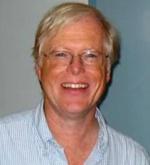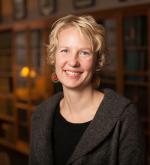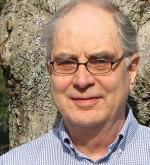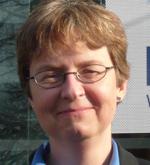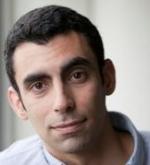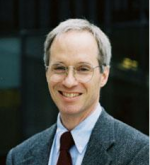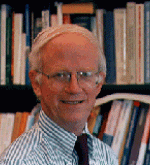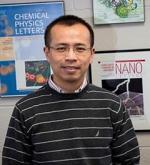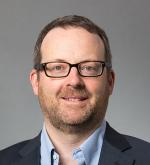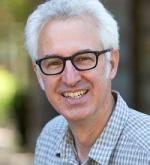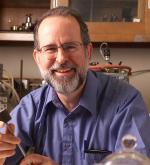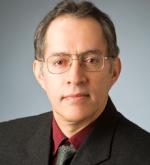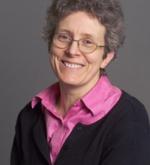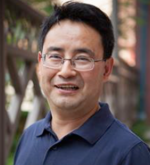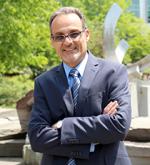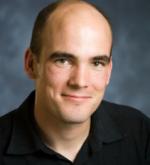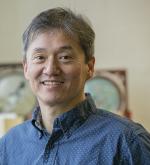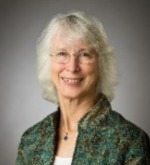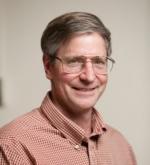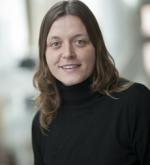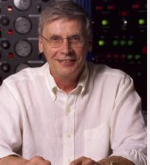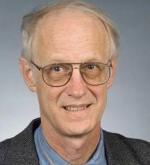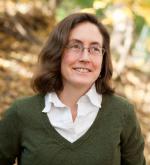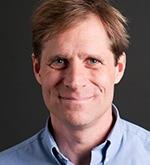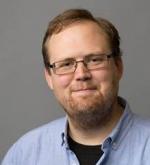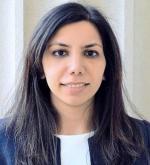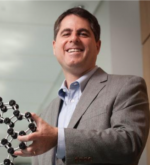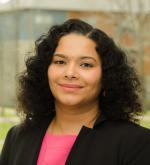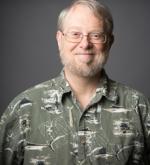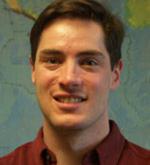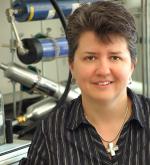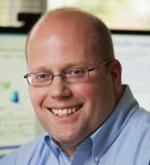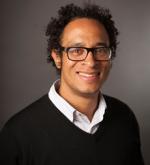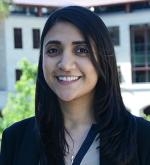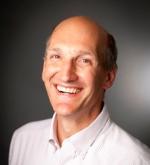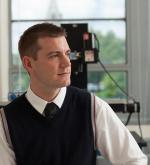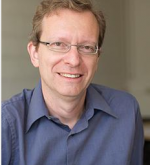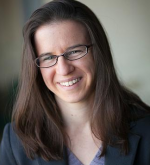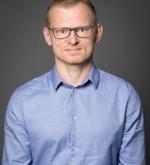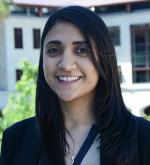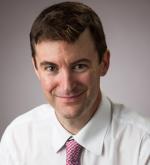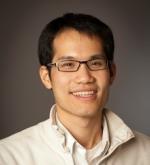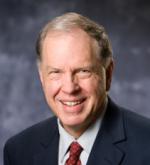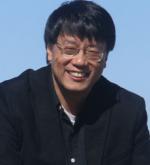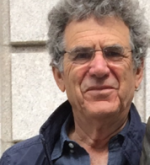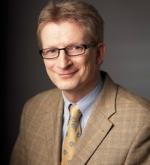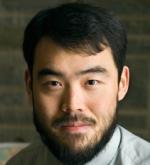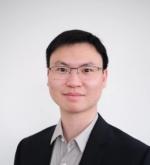Electrokinetics, electodeposition, and transport analysis in electrolytes and at electrochemical interfaces; synthesis, materials physics, and electrochemical analysis of nanoscale organic-inorganic hybrid materials (NOHMs) for solid-state battery electrolytes
Faculty Experts
Abers has a primary interest in understanding processes that drive deformation and material cycling within the earth, mostly at active plate boundaries. Subduction zones have been a main interest, the sites of the planet's largest earthquakes, most devastating volcanic eruptions, and the places where the growth of continental crust takes place. Many of his major projects have been deployments of dense arrays of broadband seismographs to image structure in places such as Alaska, Central America, Papua New Guinea, and the Pacific Northwest.
The Abruña Group focuses on the development of new materials, and their characterization, using a wide variety of techniques, for fuel cells and batteries. Our research effort takes an interdisciplinary approach to the study of electrochemical phenomena. We employ electrochemical techniques as probes of a variety of chemical systems using design, synthesis, and characterization, with emphasis on operando methods.
Professor Afridi's primary research interest is in high frequency power electronics and energy systems incorporating power electronic controls as a means to efficiently harness, store, process, transmit, distribute and use energy. While his work across this entire energy chain is centered on the design of advanced power electronic converters, his research also includes solutions at the system and component level that draw upon his broad academic and industrial experience and leverage collaborations with faculty members in allied disciplines.
Allmendinger is dedicated to helping Cornell students and the public at large understand the difficult issues surrounding energy and global climate change as well as natural hazards such as earthquakes. To this end, he maintains a high profile web site and gives numerous public lectures a year in venues such as Ithaca High School, Museum of the Earth, Cornell Alumni events, and in various seminars and campuses around campus.
C. Lindsay Anderson Interim Director, Cornell Energy Systems Institute
Professor Anderson’s research interests focus on the application of systems modeling and optimization to energy and the environment. Current projects include mitigation of wind generation uncertainty through the use of other renewable energy sources, the cost of wind energy uncertainty on existing power systems, and the implications of process uncertainties in biofuels production outcomes.
We are pursuing research that cuts across a variety of disciplines, including heat transfer and combustion. Problems are pursued from an experimental (as contrasted with a purely computational or theoretical) approach. Current projects include studies of droplet combustion, film boiling to promote thermal decomposition or organic liquids, and phase change processes of highly superheated liquids.
Our team works on the problem of biological energy capture: the primary bottleneck in the conversion of sustainable energy to fuel. We study energy capture in microbes by applying physical principles, genetic engineering, and novel high-throughput methods.
Professor Barthelmie's research is focused on wind energy resources and wind turbine wakes within and downwind of large wind farms both on- and offshore. In Denmark, she ran the offshore wind energy network and she was involved in the development of many offshore wind farms. In the US, her focus has been wind energy resources and impacts of wakes and their interaction with the boundary-layer within large wind farms.
Eilyan BitarDavid Croll Sesquicentennial Faculty Fellow
Professor Bitar's research is currently focused on the design and analysis of robust and stochastic optimization algorithms, focusing primarily on problems that entail sequential decision-making in uncertain and adversarial environments. He is particularly interested in applications spanning electric power and transportation systems, with an emphasis on the design of market mechanisms and optimization methods to manage uncertainty in renewable and distributed energy resources.
Brock is also working to developing the next generation of x-ray sources. LINAC based x-ray sources such as (pulsed) X-ray Free Electron Lasers (XFELs) and (cw) Energy Recovery LINACs (ERLs) will create diffraction limited and degenerate x-ray beams that will enable coherent and time-resolved techniques previously only possible with optical lasers. Our long term goal is to generate, manipulate, and utilize coherent x-ray beams for atomic-scale structural measurements on the relevant fundamental time-scales.
My current research objectives are threefold: (1) to construct higher resolution models of the earth's response to the melting of the continental ice masses of the last glaciations, (2) to integrate chemistry into simple heat and mass transfer models of aqueous fluid flow in the earth's crust to understand the fundamental constraints (if any) on supplying in perpetuity 10.5 billion with the energy and mineral resources required for a European standard of living, and (3) to develop a methodology for using nanoparticles as non-diffusing tracers that can measure fluid bypass and enable new fluid management strategies.
Professor Chen's Group develops and applies single-molecule approaches to interrogate and understand the function and dynamics of nanomaterials and biomacromolecules, with the goal of acquiring fundamental chemical knowledge for developing better strategies for energy conversion as well as for curing and preventing diseases.
The research focus of the Coates group is the development of new synthetic strategies for producing polymers of defined structure. The control of polymer composition, architecture, stereochemistry, and molecular weight allows the indirect control of polymer properties via polymer morphology. Our research projects are interdisciplinary, addressing problems at the interface of organic, inorganic, organometallic, and polymer chemistry.
Cowen's research interests are in environmental fluid mechanics and energy harvesting. He pairs lab-based research with full-scale observational field campaigns to understand the physics of natural and anthropogenic flows in the environment. He has built an environmental fluid mechanics research program centered on five themes: environmental transport processes, water wave induced flows, lake hydrodynamics (physical limnology), energy harvesting, and quantitative imaging techniques.
Daziano's research focuses on engineering decision making, specifically on theoretical and applied econometrics of consumer behavior and discrete choice models applied to technological innovation in transportation and energy. Daziano's specific empirical research interests include the analysis of air travel demand, the study of pro-environmental preferences toward low-emission vehicles, modeling the adoption of sustainable travel behavior,
The DiSalvo Group synthesizes, characterizes, and tests nanoscale materials for possible application to new energy systems. Such materials include solid state oxides, nitrides, or intermetallic compounds. Possible applications are catalysts or catalyst supports for fuel cells or electrodes for batteries.
Our multidisciplinary research span many areas. Within energy we have focused on unique reactor designs for photothermal conversion of CO2 to useful fuels and commodity chemicals. In addition to fundamental research, we emphasize transition of our technologies to the market place through the formation of start-ups and other commercial interactions.
Professor Escobedo's research group is at the forefront of novel methodologies for the simulation of both thermodynamic data (like free-energies and microstructure) and kinetic information (like transition mechanisms and rate constants) from molecular-level models of complex materials. His current interests center on establishing structure-property relationships for materials made from customizable nanoscale building blocks such as oligomers, polymers, and nanoparticles.
Fisher Group uses bench-scale experiments and numerical simulations to investigate the combustion chemistry, flow, and heat transfer processes in biomass energy systems and other practical systems. Their focus is on understanding the chemical kinetic mechanisms relevant to the formation of desired products as well as pollutants. Applications include: biomass combustion in cookstoves; biomass pyrolysis to produce fuels, biochar, and heat; flame inhibition; combustion of practical liquid fuels including biodiesel and jet fuel; oxycombustion for carbon sequestration; incineration of hazardous wastes and chemical warfare agents.
Greeshma GadikotaCroll Sesquicentennial Fellow
With more than 80% of our energy resources recovered from the subsurface environments which requires about 50 billion cubic meters of fresh water and contributes to more than 75% of global CO2 emissions, our grand societal challenge lies in meeting our growing demand for energy and resources while reducing environmental impact. Addressing these earth-scale challenges requires us to develop novel technologies to engineer targeted physico-chemical interactions in complex engineered and natural environments. Enabling emergent technologies for a sustainable earth requires us to advance the cross-scale science of fluid-solid interactions in complex and extreme environments. With this perspective, our research is directed towards applications that involve (i) engineering the natural environment for sustainable energy and resource recovery and (ii) designing novel chemical pathways for advancing low carbon and negative emissions technologies.
Oliver GaoAssociate Director
Quantitative modeling and development of engineering systems solutions for sustainable and intelligent infrastructure and lifeline systems; low carbon and low emission transportation systems, and the closely related environment (especially air quality and climate change); energy systems; alternative transportation/energy technologies, systems innovation, and green supply chain and logistics (e.g. sustainable food systems, quantifying and mitigating green-house gas emissions from food supply chains)
Professor Gazer is a geoscientist working on understanding the properties of materials that built our planet and other solid planets. Besides his main research focus on how melting processes contribute to planetary evolution, he is also interested in the sustainable use of resources and more efficient ways to extract rare earth elements and other strategic metals. His research program includes the study of serpentinization and carbonation of ultramafic rocks and their potential as reservoirs for permanent carbon storage.
Efforts to manipulate and control materials at the nanoscale have taken center stage in research activities all over the world, motivated in part, by the realization that nanoscale materials often exhibit properties that are dramatically different from their microscale counterparts. In that respect polymer nanocomposites synthesized by adding nanoparticles such as nanoclays into the polymer matrix have attracted considerable attention in recent years. The goal is to develop lightweight composites with potentially superior mechanical, rheological, electrical, thermal and biomedical properties by taking advantage of the high surface area available in the nanoparticles and the accompanied synergistic effects with the polymer matrix.
While the world faces many seemingly insurmountable challenges, insuring access to affordable, reliable, sustainable energy for all its citizens is not only achievable, but of paramount importance to lifting the marginalized out of poverty and reversing climatic damage. By understanding how pollutants from energy generation impact the environment, and designing new processes to convert renewable sources to energy and materials that remove such pollutants, we can mitigate energy’s impact on the environment while enabling widespread access to modern energy for all.
Prof. Haji’s research is focused on designing offshore systems to sustainably extract resources from the ocean such as power, water, and food, as well as mineral resources key to the progress of clean energy. Her lab designs and tests offshore systems ranging from those that can harvest minerals from the ocean to those that sustainably power offshore aquaculture farms via wind and wave power.
Our research efforts focus on the fundamental study of optoelectronic properties of semiconductor nanocrystals; this work is inspired by the potential application of these materials in solar energy conversion and energy storage devices. The semiconductor nanocrystals used in our work provide a diverse set of building blocks whose electronic and optical properties differ from their bulk counterparts due to the spatial wavefunction confinement.
The Hassani group uses experiments, analytical theory, and computer simulations to understand the process-structure-property relationships in structural materials. Examples of our research include (i) designing high-strength lightweight materials to reduce energy consumption in the transportation sector, (ii) advanced structural alloys and composites for fusion energy production, and (iii) solid-state material processing and manufacturing that are less energy-intensive compared to the melt-based counterparts.
Our research interests are driven by the goal to enable orders of magnitude increase in energy efficiency and speed for computation, memory, communications, lighting, and electrical energy management ranging from the chip to the grid. We do so by using quantum mechanical principles to design new materials, growing the materials by epitaxy, and fabricating and demonstrating semiconductor electronic and photonic devices that achieve the above goal.
Our research focuses on the integration of continuum analysis with molecular details in nanomaterials processing. Areas of current interests include the microstructural rheology and mesoscale modeling of processing of complex fluids, the formation of nanostructures in nanomaterials, and the occurrence of viscoelastic instabilities in polymer flows. In particular, we have recently laid a new foundation for experimental and theoretical studies on advanced, scalable nano-manufacturing processes.
Teresa JordanAssociate Director
Assessments of geothermal energy resource potential in sedimentary rocks of the Appalachian Basin; location-specific analyses of subsurface conditions to evaluate risks and benefits; subsurface geological conditions of region near Cornell Campus, in preparation for proposed Earth Source Heat geothermal demonstration project that is intended to help achieve Cornell’s carbon neutrality goal.
Theoretical guidance for the design of complex-fluid electrolytes that inhibit dendrite growth in batteries and electrodeposition; modeling transport processes in geothermal energy extraction, CO2 sequestration, and hydraulic fracturing
The Kourkoutis electron microscopy group focuses on understanding and controlling nanostructured materials, from complex oxide heterostructures to materials for battery and photovoltaic applications to biomaterials. The presence of interfaces between different components is a key feature of all nanoscale materials and devices. Macroscopic properties of a system depend upon detailed atomic configurations, interfacial chemistry, and electronic coupling.
Our research is mainly in the area of plasma physics, with the economic realization of fusion-powered electrical power generation the major goal. Such power plants have two main advantages: (1) abundance of cheap fuel and (2) less severe (when compared to fission reactors) nuclear-waste problems. While large experimental fusion machines with parameters close to those necessary for power reactors are under design and construction, many basic plasma-physics questions remain to be solved. It is in this area of basic research that university laboratories like ours at Cornell are able to contribute.
Lehmann Group is interested in advancing our general understanding of biogeochemical cycles of carbon and nutrient elements in soil, providing important insight into regional and global element cycles such as the carbon or sulfur cycle. This field of research has global and local relevance with implications for climate change and environmental pollution.
Li is interested in the fluid dynamics, heat transfer and hydrologic processes in the built environment. She develops and applies numerical models to study how the built environment impacts the land-atmosphere interactions at multiple temporal and spatial scales. Her approach includes both high-performance computing (large-eddy simulations and direct numerical simulations) and field experiment data to develop a physical understanding of the transport of momentum, energy and mass in the built environment. Examples of her current research topics are improving the representations of urban areas in regional weather models and dispersion modeling with improved urban micrometeorological component.
Over the past several years, Lovelace's theoretical and computer simulation research has been directed to different problems involving astrophysical flows and plasmas. Most of this work has been done in the framework of the US-Russia collaboration on plasma astrophysics. The flows are observed in the accretion disks and associated jets and winds of rotating neutron stars and black holes in binary systems, around massive black holes in the nuclei of active galaxies and quasars, and around newly forming stars.
My research group is focused on understanding global and regional scale atmospheric transport of biogeochemically important species such as desert dust. We are interested in how humans are perturbing the natural environment, especially through biogeochemical feedback. We look at these issues through a combination of 3-dimensional global transport and climate models, as well as analysis of satellite and in situ data.
By rewiring cellular signaling circuitry, highly specific responses can be tailored to a wide array of process inputs. Most of the work in the March laboratory is centered in three major areas: signal transduction, metabolism, and eukaryotic-prokaryotic interactions. While his group is primarily concerned with events occurring at a subcellular level, sometimes the best solution can be found by focusing on the environment immediately around a cellular population.
Mays’s research focuses on the development of mathematical tools for problems in energy systems, with a particular emphasis on the design and analysis of wholesale electricity markets. Current projects investigate market design adaptations needed to enable an efficient transition to clean energy sources.
A major focus of research in the Milner group is the design of materials to not only enable new synthetic transformations, but also to change the ways in which reactions are carried out. To achieve these goals, we are interested in unlocking the untapped potential of porous materials such as metal-organic frameworks as tools for organic synthesis. In addition, we will employ electrochemistry to effect controlled redox processes that cannot be achieved in any other manner, with an emphasis on understanding and ultimately controlling how chemistry at the electrode surface governs the outcome of reactions.
She exploits the intrinsic properties (i.e., rapid solidification, melt pool dynamic, intrinsic heat treatment) as well as flexibility of additive manufacturing (i.e., local or site specific metallurgy and incorporation of nanomaterials) to synthesize novel high performance materials, which can be used in energy storage. She studies processing, microstructure, and mechanical response of advanced materials using in-situ x-ray and electron microscopy techniques.
David MullerAssociate Director
Atomic-scale characterization and control of matter for applications in energy storage and conversion, with a current focus on battery and fuel cell electric vehicles
He is a fuel cell chemist and has been working in the field of fuel cell materials and systems development for 20 years. Paul's work includes helping to manage the Center for Alkaline based Energy Solutions, which is advancing the science of electrocatalysis under alkaline conditions. His work also involves researching the economics of sustainable hydrogen production and use.
The Nair group focuses on development and characterization of alternate cementitious materials in order to accelerate their use in civil infrastructure and energy applications. An area of interest includes improving cementation of wells drilled for fossil fuels or geothermal energy to prevent leakage of oil and gases into the atmosphere. Also, as millions of oil and gas wells reach the end of their production efficiency, the Nair group is developing materials that can permanently plug the wells.
Nair group news: http://www.atkinson.cornell.edu/grants/avf/?ID=2020_Nair
Dr. Nozick's primary research interest is the development of mathematical models for use in the management of complex systems. She has particular interest in systems that can be represented mathematically as networks, including transportation and logistics systems, civil infrastructure networks and project networks.
Ober Group research is focused in three areas: fundamental studies of self-organization in polymers, lithographic materials for microelectronics and biotechnology and new environmentally and biologically friendly materials. Each of these topics involves creative polymer synthesis using state-of-the-art facilities and methods as well as advanced characterization tools, most of which are located here at Cornell University.
Pritchard Group measures changes in the shape of the Earth and develops models of the myriad processes that cause these changes including: earthquakes, volcanoes, groundwater, landslides, and glaciers. Interests in geophysics, glaciology, geodesy, tectonics, and volcanology; optical and radar satellite remote sensing.
Professor Pryor works in two related fields with climate science; (i) physical manifestations of global climate change and variability at regional scales (downscaling), and (ii) understanding formation and removal processes for atmospheric aerosols in order to reduce the uncertainties regarding aerosol climate forcing. Further interests include the use of high resolution modeling and remote sensing technologies to improve wind farm layout, wind farm array-array interactions and wind energy resources and operating conditions.
Dr. Reed's primary research interests relate to sustainable water management given conflicting demands from renewable energy systems, ecosystem services, expanding populations, and climate change. The tools developed in Dr. Reed's group bridge sustainability science, risk management, economics, multiobjective decision making, operations research, computer science, and high performance computing.
Nanoparticles and nanostructured materials for next generation fuel cell catalysts, batteries and supercapacitors; chemically transforming nanoparticles to create metastable and nanoheterostructures with new properties that can lead to advanced energy applications; scalable synthesis methods for nanoparticles for the energy industry.
Her work includes the computational and experimental investigation of flow, heat transfer and chemical reactions in porous media. Leveraging the connection between the micro-scale features and macro-scale transport properties, her lab researches rigorous pathways to apply topology optimization techniques combined with additive manufacturing and non-intrusive diagnostics to design, fabricate and analyze tailored porous structures in combustion, electrochemistry, and other complex flow systems.
The focus of my group's research is investigating and perfecting the properties of oxide materials for electronic uses. To do this, we grow oxide thin films on single crystal substrates of closely related substances. The single crystal substrate provides a structural template for the thin films that we grow. The films follow this atomic template and are thus said to be epitaxial (inheriting their crystalline arrangement from the underlying substrate).
Dr. Shepherd is interested in developing disruptive manufacturing technologies (e.g., 3D printing, replica molding, microfluidics, etc.) and functional materials to enable new devices and user experiences. He is particularly interested in simultaneously increasing the speed, dimensionality, resolution, and materials capability of free-form fabrication techniques, and developing soft actuators that mimic biological functions, but not necessarily their mechanisms.
Professor Shvets is a pioneer in the emerging field of plasmonic metamaterials, especially in the infrared part of the spectrum. He and his colleagues were the first to experimentally implementing the concept of the Infrared Perfect Lens based on polaritonic materials (SiC), and the first to experimentally investigate optical properties of the so-called hyperbolic metamaterials that enable the propagation of sub-diffraction light waves. His most recent work deals with the applications of metamaterials and plasmonics to infrared light generation and harvesting, concentrated solar energy and thermo-photovoltaic systems, biosensing and molecular fingerprinting of proteins and live cells using metamaterial arrays, optical imaging with sub-diffraction resolution using nanoparticle labels, photonic topological insulators, graphene-based metamaterials, and electron beam-driven metamaterials.
Meredith Silberstein's Mechanics for Materials Design (MMD) Lab is devoted to using mechanical experiments and modeling methods in material design, with particular focus on multifunctional, active, and polymeric materials. Her research focuses on computational solid mechanics, materials design, micro nano systems and solid mechanics.
Andrej SingerCroll Sesquicentennial Fellow
Research projects include: defect dynamics and phase transformations in energy storage materials; new phases of matter far from equilibrium; and self-assembly of biological photonic crystals.
Professor Sobhani’s research activities focus on developing high-efficiency, low-emission, and robust thermal management and energy conversion systems. She explores rigorous pathways to apply topology optimization techniques combined with additive manufacturing and non-intrusive diagnostics to design, fabricate and analyze tailored structures in combustion, electrochemistry, and other complex flow systems.
The Stroock Lab focuses on manipulating dynamics and chemical processes on micrometer scales. Current efforts in the lab relate to 1) the study and application of mechanisms for manipulating liquids inspired by plants, 2) fundamental studies of the properties of liquid water at negative pressure, 3) studies of the biophysical processes that control vascular development and applications of these processes in tissue engineering, and 4) theoretical, numerical, and experimental studies of fluid mechanical processes on small scales for chemical process.
Our group focuses on identifying design strategies based on optics and electronic structure engineering to discover new materials and devices for sustainable energy and environmental technologies. Ongoing efforts in our group include: Electrocatalysts and photocatalysts from transition metal oxide heterostructures, in situ spectroscopy on catalytic and photocatalytic surfaces, nanophotonics for environmental sensing, pollution detection, and toxin deactivation.
Professor Tang is broadly interested in networks. The current focus is on control and optimization of engineering networks such as the internet, power grids, and control and optimization of power systems.
Jefferson W. TesterDavid Croll Sesquicentennial Fellow and Professor
Research interests include the utilization of geothermal heat for district energy with a focus on subsurface reservoir engineering and integrated system design and analysis; hydrothermal treatment of agriculture and food wastes to recover energy, nutrients, and water.
We are an interdisciplinary research group specializing in both computational modeling and experimental characterization of energy transport. We are on a mission to advance the fundamental understanding of multiscale energy transport and make a transformative impact on material design and discovery for diverse applications.
Lang Tong's current research focuses on energy systems and smart power grid. In particular, his group investigates data analytics, system optimization, and market issues associated with renewable energy, storage, and the electrification of transportation systems. He is part of the Engineering and Economics of Electricity Research Group.
Zellman Warhaft conducts basic wind tunnel experiments on particles in turbulence in order to understand the dynamics of raindrops in clouds. He collaborates with experts on Lagrangian tracking of inertial particles (Bodenschatz (Goettingen), Voth (Wesleyan)), and on the cloud physics (Shaw (Michigan)), Seibert, (Leipzig)). His interest in this area was stimulated by his work on the effect of weather on microwave radio propagation.
The goal of current research in the Wiesner group is to combine knowledge about the self-assembly of soft polymeric materials with the functionality of solid-state materials to generate novel hierarchical and multifunctional hybrid materials. Research results of the group on the use of blocked copolymers as structure directing agents for inorganic materials suggest that in analogy to biology, the sequence information of higher order blocked synthetic macromolecular architectures may be used to encode information about hierarchical structure of co-assemblies with ceramic or other materials.
As part of PRO-DAIRY the Dairy Environmental Systems Team works to help dairy farms move toward energy, economic, environmental and social sustainability. Energy use and the potential production of energy from agricultural by-products, principally manure, while reducing the dairy farms environmental impact is a major part of what we do. Anaerobic digestion of the high moisture dairy manure to produce a biogas, often augmented with co-digestion of other organic wastes has the potential to reduce greenhouse gases, provide renewable energy, as well as pretreat the effluent stream for additional processes including additional energy extraction, nutrient partitioning and by-product production.
Professor Wu's research lab studies molecular mechanisms with which cells sense and migrate, using an integrated microsystems engineering and theoretical modeling approach. She and her students develop microfluidic systems to provide cells with well-defined and physiologically realistic 3D microenvironments (e.g., chemical gradients, fluid flows, and biomatrices).
Xing's research work can be loosely categorized into 4 areas, supported by DoD, NSF, SRC and Doe.
Development of AlN/GaN semiconductor-based deep UV emitters to rival the energy conversion efficiency achieved for visible and NIR by semiconductor lighting science and technology; and wide bandgap semiconductors for future power electronics.
Fengqi YouAssociate Director
Analysis, design, and optimization of energy systems, including biofuels processes, photovoltaics, carbon capture and separation, and shale gas; battery systems engineering; energy-water-food-waste nexus; leveraging big data analytics for sustainability analysis and optimization under deep uncertainty; sustainability analysis of nanotechnology and advanced materials
Zehnder's research focuses on the fracture of nanoscale systems, nonlinear dynamics of nanomechanical oscillators, damage tolerance of polymers and matrix composites.
Dr. Zhang's research interests focus on energy and the environment. Through community engagement, his research group is developing impactful solutions to societal challenges through integrating energy and environmental systems. He is currently leading several initiatives such as data-driven air quality modeling of global cities, electrification of the heating sector, New York State-wide public Internet of Things (IoT) network, agrivoltaics in Eastern U.S. and mitigating virus transmission in built environments.
We are interested in exploring new structural designs of soft materials and nanomaterials on both molecular and nano-scale. The main research topics include: (1) mixed ionic-electronic materials and devices for electronics and healthcare applications, (2) synthesis and transport study of hybrid organic-inorganic 2D materials, (3) and ultrathin nanoporous membranes for separation and sustainability. In parallel, we develop and apply advanced technologies to the materials synthesis.


